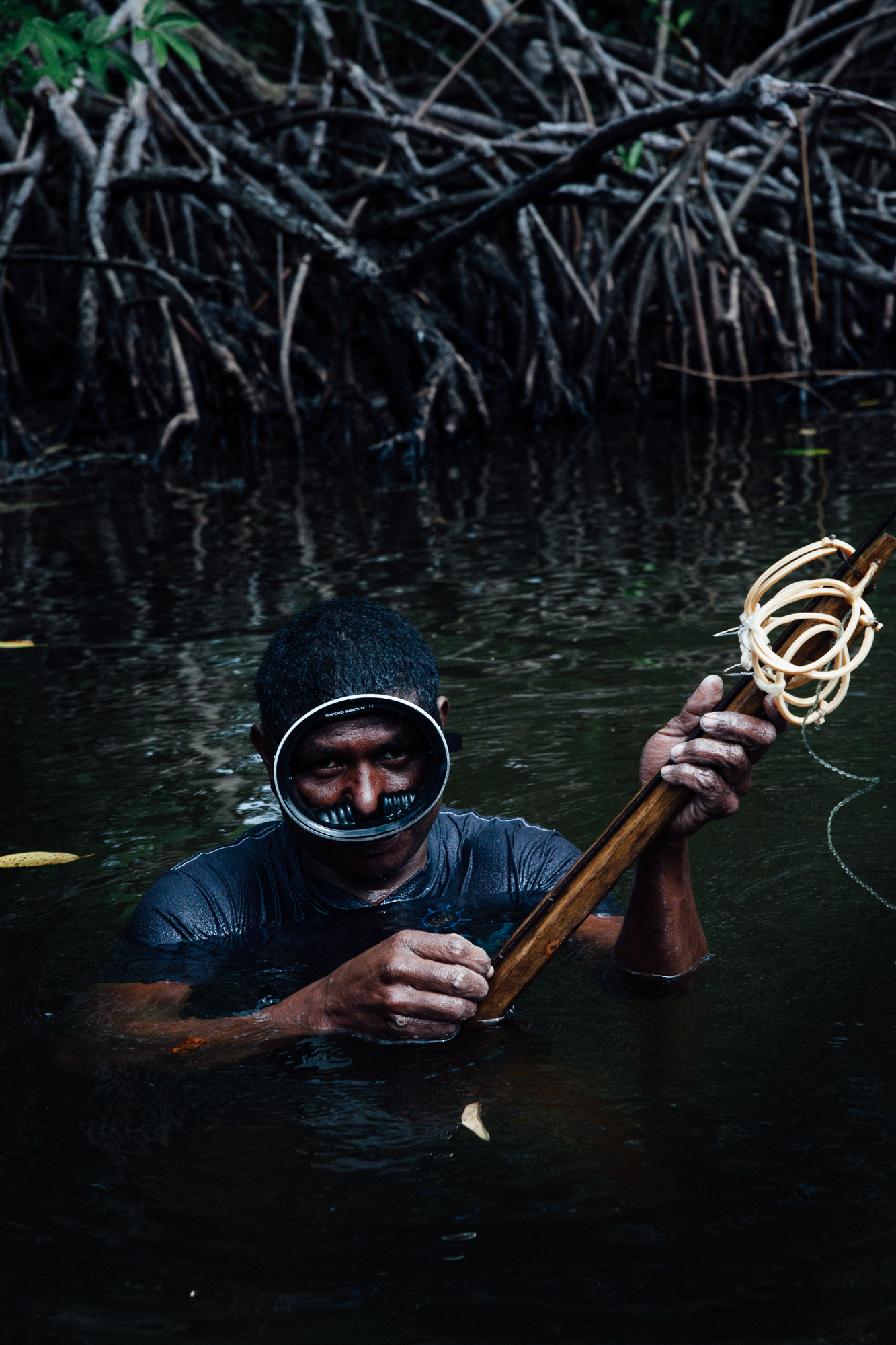In Liwa Mairin, the interactions the Moskitia people have with water are represented through portraits
The Moskitia, an indigenous group in Honduras, have a very interesting relationship with water. Their survival and livelihood depends on it, as it provides them with the lobsters, sea cucumbers and other marine wildlife that they harvest to sell. However, it also poses serious risks, with an estimated 2,000 to 3,000 divers in Honduras currently suffering from spinal cord injuries resulting from long deep dives, according to National Geographic. Valérian Mazataud, a marine biologist-turned-photographer, examines this relationship in Liwa Mairin, his series of portraits.
Mazataud said he first learned about the Moskitia from an article featured in a diving magazine. The author, a physician, discussed the dangers of deep diving using compressed air tanks, and the effects on the Moskitia divers. Mazataud said he was moved by the story, and saw it as an opportunity to combine his love of aquatics and marine life with his current passion for photography and journalism.
These photographs are as beautiful as they are informative, each portrait telling a part of the overall story. They bring out the serene beauty in a dangerous occupational hazard, while also illustrating the complex relationship the Moskitia have with water. It is a practice that fuels their economy, but which is also inherently dangerous. The nitrogen build-up in the blood from long dives can cause bubbles to form in arteries, the spinal cord and the brain, Mazataud said.
Intentional or not, the photos seem to be set up in a linear narrative in the form of a story, as you follow peoples adventures into the water. The first shots depict family excursions into waist-deep water, or fishing as a family activity. As the shots progress, you come across underwater shots of the Moskitia, with a cloud of bubbles around them while they remain suspended in the endless blue ocean, on the hunt. Then, we see pictures of divers who have suffered crippling spinal cord injuries, and are faced with various levels of paralysis. The final shot is the tombstone of a diver who succumbed to the consequences of a long, deep dive into the ocean.
“Their whole life, all of their history and all of their mythology revolves around water, and all the time you see them swimming, fishing, doing things in the water,” Mazataud explained.
A particularly strong shot from this series is of a diver holding a spear gun, standing shoulder-deep in murky water. As he stares straight into the camera, you face the uncertain reality that he might not come up for another breath. These are the everyday struggles of the Moskitia, whose livelihoods depend on exploiting the resources of the ocean in order to survive, despite the costly bodily consequences.
Their lobster exports alone are worth $40 million US annually, according to a written statement about the exhibit. The North American demand for lobster can allow for potential injuries, because it is this export that motivates the divers to risk their lives.
“I think it’s important that we look at where our food comes from,” said Mazataud. “Not only lobsters but in general, there’s always a price for the products we consume in North America, and there is a history linked to it. Along the trade routes, you kind of lose the origin of a product.”
The exhibition goes on until Sept. 29 at the Maison du développement durable. The photos are displayed in the entrance, and admission to view them is free. The Maison is open Monday to Friday from 10:30 a.m. to 6 p.m., as well as Saturday from 11 a.m. to 4 p.m.
